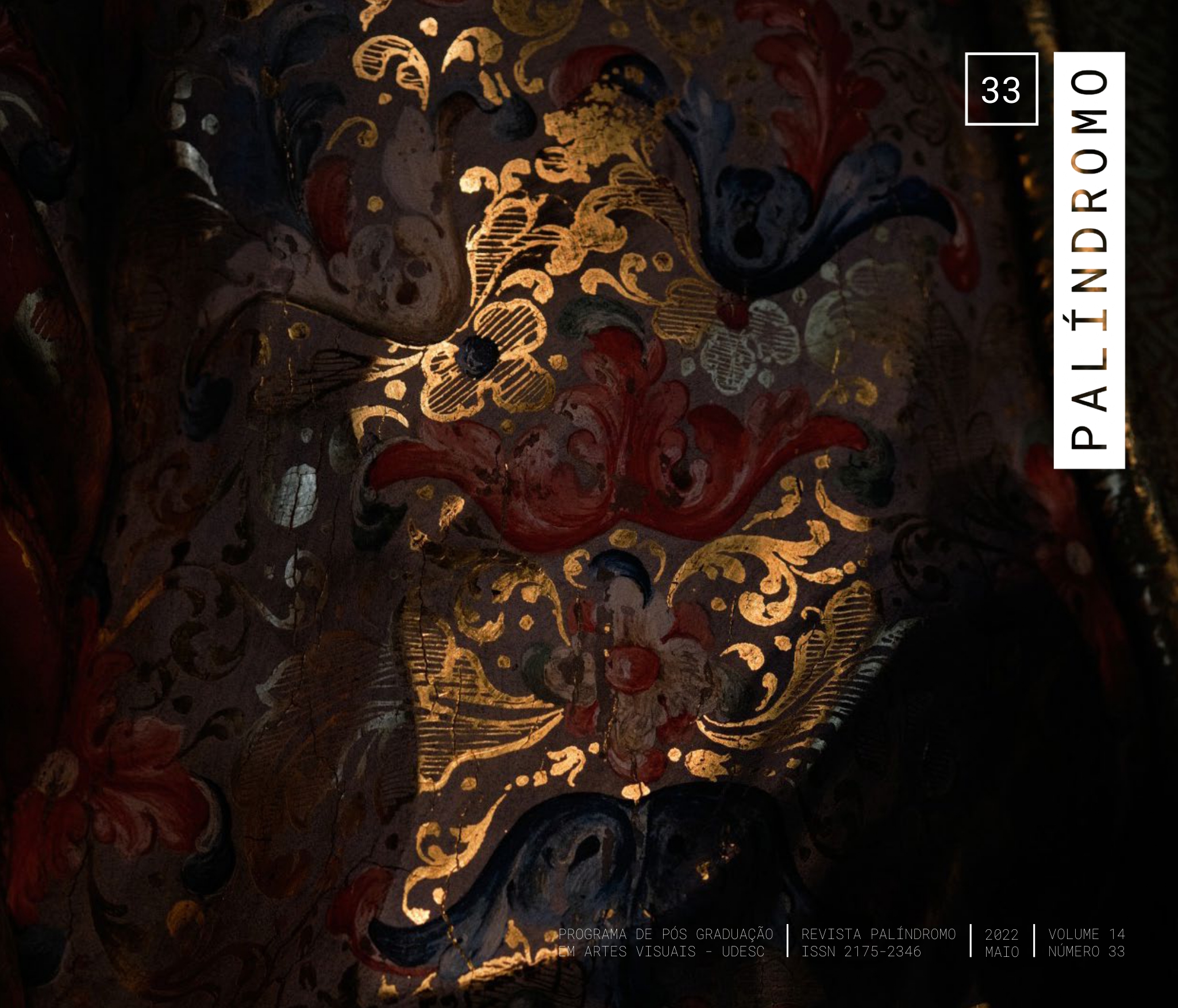Unindo o divino e o humano: um mergulho nos detalhes e simbolismos de três Virgens medievais
DOI:
https://doi.org/10.5965/2175234614332022162Palavras-chave:
Virgem Maria, Arte Medieval, Escultura, Detalhe e SimbolismoResumo
Este artigo desenvolve uma reflexão sobre como os detalhes podem revelar os simbolismos que geram significados na imagem, e de como os artistas representaram referências a outras áreas das artes na escultura em questão. O estudo parte de três esculturas medievais que figuram a Virgem Maria e o Menino Jesus, e estabelecem diálogos sobre o caráter humano e divino de Maria na iconologia cristã. O culto mariano teve grande apelo no medievo e as esculturas escolhidas são obras que figuram estilos diferenciados. Uma escultura representa a Virgem humanizada, a outra apresenta-se como um relicário composto, e a última é uma imagem de Maria humanizada, imersa em dor.
Downloads
Referências
Bíblia, Novo Testamento. Disponível em: https://bible.knowing-jesus.com/Portuguese/ Com acesso em 10 de janeiro de 2022.
CAMPBELL, Joseph. The Masks of God 2: Oriental Mythology. USA: Penguin, 1991.
CARLQUIST, Jonas. Introduction - Virgin, Mother, Queen, and Bride: Visual Representations of the Virgin Mary in Wall Paintings by Passionsmästaren of Gotland. In: CARLQUIST, Jonas; LANGUM, Virginia (orgs.). Words and Matter: The Virgin Mary in Late Medieval and Early Modern Parish Life. Sällskapet Runica et Mediævalia Stockholm, 2015.
Department of Medieval Art and The Cloisters. “The Cult of the Virgin Mary in the Middle Ages.” In: Heilbrunn Timeline of Art History. New York: The Metropolitan Museum of Art, 2000–. http://www.metmuseum.org/toah/hd/virg/hd_virg.htm (October 2001)
ERIKSSON, Ann-Catrine. Virgin, Mother, Queen, and Bride: Visual Representations of the Virgin Mary in Wall Paintings by Passionsmästaren of Gotland. In: CARLQUIST, Jonas; LANGUM, Virginia (orgs.). Words and Matter: The Virgin Mary in Late Medieval and Early Modern Parish Life. Sällskapet Runica et Mediævalia Stockholm, 2015.
GABORIT-CHOPIN, Danielle. Le trésor de Saint-Denis, Paris, musée du Louvre, 1991, n° 51, p. 246 et site internet du musée du Louvre, notice Cimaise rédigée par Muriel Barbier. In : https://collections.louvre.fr/en/ark:/53355/cl010096615 Com acesso em 12 de fevereiro de 2022.
HALL, James. Dictionary of Subjects and Symbols in Art. London: J. Murray, 1974.
HARRIS, Beth; ZUCKER, Stephen. Humanizing Mary: the Virgin of Jeanne D’Evreux. In: Smart History, The Center for Public Art History, 2017. Disponível em: https://shistory.com/virgin-jeannedevereux/ Com acesso em 12 de novembro de 2020.
HARRIS, Beth; ZUCKER, Stephen. Hiding the divine in a medieval Madonna: Shrine of the Virgin. In: Smart History, The Center for Public Art History, 2020. Disponível em: https://shistory.com/shrine-of-the-virgin/ Com acesso em 13 de janeiro de 2021.
HERNANDO, Irene González. Las Vírgenes Abrideras. In: Revista Digital de Iconografía Medieval, vol. I, nº 2, 2009, pp. 55-66. e-ISSN: 2254-853X.
HUIZINGA, Johan. O Outono da Idade Média. SP: Cosac & Naify, 2010.
JAMES, Liz. Senses and sensibility in Byzantium. In: Art History. ISSN 0141-6790. Vol. 27, No 4. UK: Blackwell Publishing, 2004. P. 522–537. DOI: https://doi.org/10.1111/j.0141-6790.2004.00436.x
LEYSER, Henrietta. Medieval Women: Social History Of Women In England 450-1500 (WOMEN IN HISTORY). London: Weidenfeld & Nicolson, 2013.
LIEPE, Lena. On the Epistemology of Images. In: BOLVIG, Axel; LINDLEY, Philip (Editors). History and Images: Towards a New Iconology. Medieval Texts and Cultures of Northern Europe 5. Turnhout: Brepols, 2003. DOI: https://doi.org/10.1484/M.TCNE-EB.3.2028
PRICE, Richard; GRAUMANN, Thomas. The Council of Ephesus of 431: Documents and Proceedings. Translated Texts for Historians. UK: Liverpool University Press, 2020.
ROSS, Nancy. Röttgen Pietà. An emotional Response. In: Khan Academy Essay, 2015. Disponível em: https://www.khanacademy.org/humanities/rottgen-pieta/ Com acesso em 07 de janeiro de 2020.
STEPHEN, Davis. Christ Child: Cultural Memories of a Young Jesus. New Haven: Yale University Press, 2014. DOI: https://doi.org/10.12987/yale/9780300149456.001.0001
Downloads
Publicado
Como Citar
Edição
Seção
Licença
Copyright (c) 2022 Luciane Ruschel Nascimento Garcez

Este trabalho está licenciado sob uma licença Creative Commons Attribution 4.0 International License.
DECLARAÇÃO DE DIREITOS AUTORAIS
a. Os artigos publicados pela revista são de uso gratuito, destinados a aplicações acadêmicas e não comerciais. Todos os direitos autorais são atribuídos à revista. Os artigos cujos autores são identificados representam a expressão do ponto de vista de seus autores e não a posição oficial da Revista Palíndromo. O (s) autor (es) compromete-se sempre que publicar material referente ao artigo publicado no Palíndromo mencionar esta publicação da seguinte forma:
Este artigo foi publicado originalmente pela revista Palíndromo em seu volume (coloque o volume), número (coloque o número) no ano de (coloque o ano) e pode ser acessado em: http://www.revistas.udesc.br/index.php/palindromo
b. Plágio, em todas as suas formas, constitui um comportamento antiético de publicação e é inaceitável. A revista Palíndromo utiliza o software iThenticate de controle de similaridade


